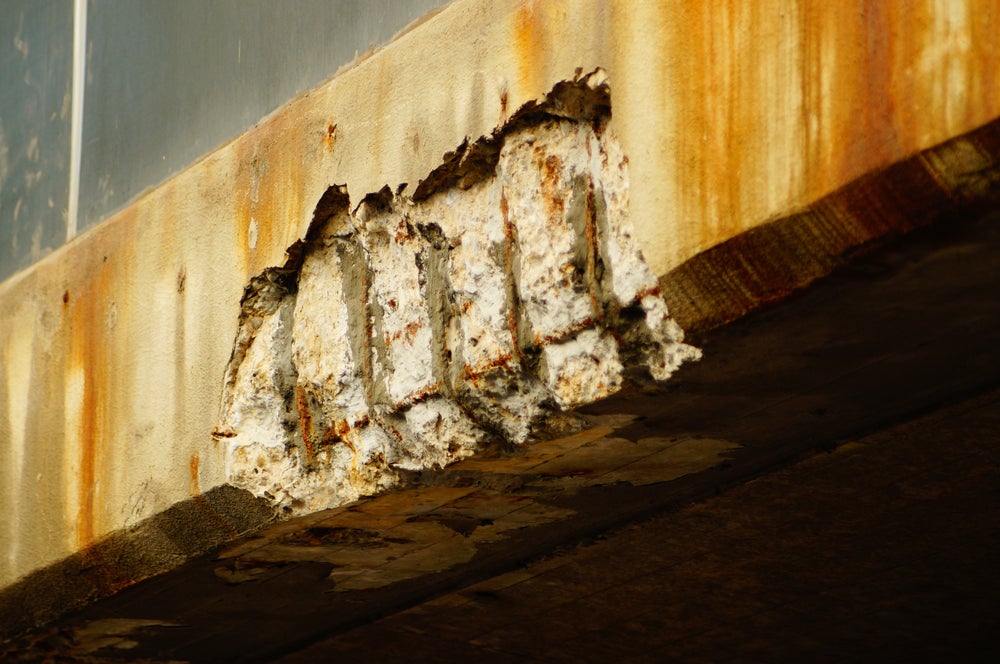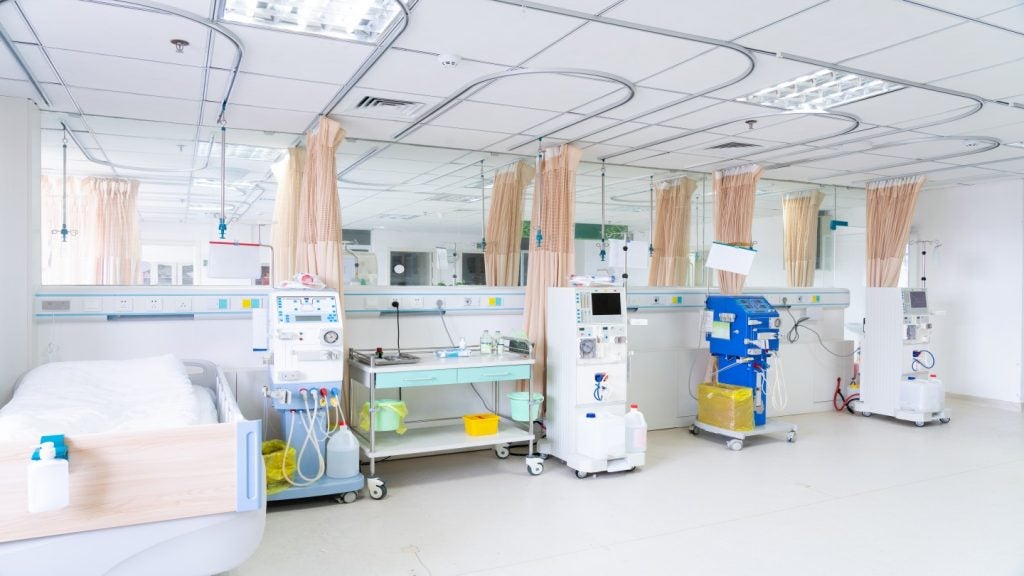
Multiple hospitals across the UK have been forced to partially close, lose beds or enact long and costly repairs after they were found to be home to dangerously inadequate concrete.
Reinforced Autoclaved Aerated Concrete (RAAC) has so far been identified in 27 National Health Service (NHS) sites across the UK which has prompted the drafting of evacuation plans and repair works scheduled to stretch into the coming decades.
RAAC is a form of concrete that is considerably less durable than other forms of the material, and after years of exposure to moisture is liable to fail, with an average lifespan of around 30 years. The concrete was mostly used in buildings built between the 1960s and the 1990s.
The NHS has been aware of RAAC having been used in the construction of hospitals for some time and has been surveying sites and mitigations since 2019, but with the material making national news over its use in schools, public attention has turned to the danger it poses in hospitals now more than ever.
A Department of Health and Social Care spokesperson said: “The NHS has a mitigation plan in place for hospital buildings with confirmed RAAC, backed with significant additional funding of £698 million from 2021 to 2025, for trusts to put in place necessary remediation and failsafe measures. We remain committed to eradicating RAAC from the NHS estate entirely by 2035.
“Additionally, we have announced that the seven most affected NHS hospitals will be replaced by 2030 through our New Hospital Programme.
How well do you really know your competitors?
Access the most comprehensive Company Profiles on the market, powered by GlobalData. Save hours of research. Gain competitive edge.

Thank you!
Your download email will arrive shortly
Not ready to buy yet? Download a free sample
We are confident about the unique quality of our Company Profiles. However, we want you to make the most beneficial decision for your business, so we offer a free sample that you can download by submitting the below form
By GlobalData“The technical advice received from the NHS is that the current approach to monitoring and mitigation remains appropriate.”
In a letter to all colleagues, NHS chief commercial officer Jacqui Rock, alongside national director for emergency planning and incident response Dr Mike Prentice, has urged staff to be ready to evacuate if buildings found to have RAAC begin to crumble or collapse.
In the letter, published on 5 September, iterates the NHS’s initial position from 2019, that extensive work needs to be carried out to identify and remove RAAC concrete in hospitals and healthcare facilities across the country.
Rock said: “Effective management of RAAC significantly reduces associated risks, but does not completely eliminate them. Planning for RAAC failure, including the decant of patients and services where RAAC panels are present in clinical areas, is, therefore, part of business continuity planning for trusts where RAAC is known to be present or is potentially present.
“A regional evacuation plan was created and tested in the East of England. Learnings from this exercise have been cascaded to the other regions. We would recommend that all boards ensure that they are familiar with the learning from this exercise and that they are being incorporated into standard business continuity planning as a matter of good practice.”
One such example of a particularly affected area is Manchester, where at least two hospitals are known to have structures containing concrete. The Manchester University NHS Trust is responsible for 10 hospitals and facilities and has been forced to make alterations to two of its major hospitals.
Whilst the trust insists that none of the affected areas or parts of the buildings play host to patient beds, both North Manchester General Hospital and Wythenshawe Hospital will have to undergo extensive refurbishment, which will be both costly and time-consuming.
At the North Manchester General Hospital, the dental lab, some areas of the gallery restaurant and other parts of the building have been identified to have the offending concrete. Over at Wythenshawe, parts of the maternity ward have been found to of been affected.
David Furnival, group chief operating officer for Manchester University NHS Foundation Trust, said: “The safety of our colleagues, patients and visitors continues to be our primary concern and we are working at all times in line with expert guidance from the Institution of Structural Engineers and NHS England. We want to assure everyone that our services are running as normal and patients should attend their appointments as usual.
“Our detailed survey found a small number of areas where RAAC has been used and we have taken prompt action, and will continue to do so, in line with expert engineering advice.”
At the same time, at Leighton Hospital, part of the Mid Cheshire Hospitals NHS Foundation Trust, the discovery of RAAC has forced an acceleration of repair plans already in place after the trust had already been battling with updating its facilities.
So far, the trust has spent more than £55 million to support inspection and remedial works with a further £28 million expected to be spent in 2023 and 2024.
In order to tackle RAAC the government will need to spend significant amounts of money on upgrading the current hospital infrastructure found across the country. In May of this year, the Department of Health and Social Care announced that Five hospitals constructed mostly using RAAC will be rebuilt by 2030 as part of the New Hospital Programme.
The five hospitals are Airedale in West Yorkshire, Queen Elizabeth King’s Lynn in Norfolk, Hinchingbrooke in Cambridgeshire, Mid Cheshire Leighton in Cheshire and Frimley Park in Surrey. The NHS asked the government to prioritise the rebuilding of these hospitals given the risks they pose, but the same treatment will need to be rolled out to all 27 presently affected hospitals in order to remove the problem entirely.
Health Minister, Nick Markham, said: “We are investing in new NHS facilities across the country giving patients the certainty they can access world-leading care in state-of-the-art hospitals, both now and in the years to come.
“In the immediate term, we’re focusing on quickly and safely rebuilding hospitals in areas which need it most – specifically those affected by this specific type of concrete, which poses a significant risk to patients and staff if not rebuilt by 2030 – with over £20 billion expected to be invested in new hospital infrastructure.
In the long term, our new standardised design means we can rapidly replicate new hospitals across the country, helping speed up construction and improving services for patients faster.”







